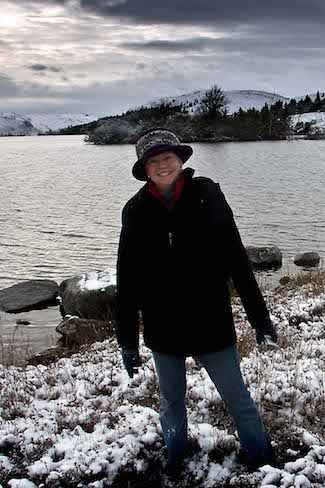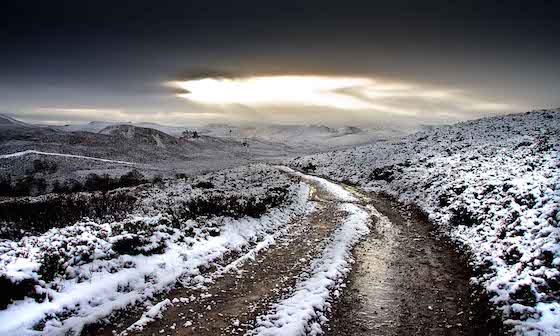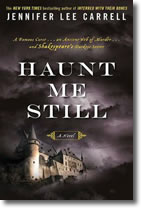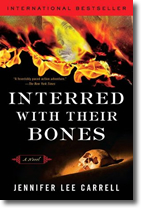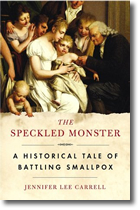words.
seductive phrase.
In spinning stories about history’s mysteries, I like to combine things I know (say, Shakespeare) with things that I don’t know. For instance, my book Haunt Me Still is a thriller that riffs on the witch–haunted play of Macbeth: its weird, dark magic and its continual power to scare the socks off the actors who play it. Where does that power come from? How much did Shakespeare know about the occult? What was the fountainhead of his genius?
I don’t know: and nobody else does, either.
As a novelist, however, it’s my privilege and my responsibility to concoct answers that are both plausible and page-turning. That’s a heady combination. At its best, it leads to adventures of the real as well as the fictional kind. So it was that on a snowy November afternoon two years ago, I set out to find a mysterious and remote Scottish loch that until a few weeks before I’d never heard of.
I’d been wrestling with how and where to end my novel. Although it’s set mostly in the present, it’s closely shaped by history. In a footnote, I’d discovered that a ruthless Scottish countess—one of Shakespeare’s near contemporaries—may have been part of the playwright’s inspiration for his legendary man-eating seductress, Lady Macbeth. Following the countess’s faint trail, I’d learned that in the 1580s, she was said to have hidden from her enemies on a small island in the midst of a loch in the Highlands. Google Earth showed me a tiny speck that might be an island in the middle of water that might be the loch in question. But the map also showed a blank expanse around its shores: no roads led anywhere near the place, and none of the professional guides or pony trekking outfits I’d contacted had ever heard of it, in any case. Regretfully, no one could take me there.
Eventually, though, an internet search had led me to a Scottish landscape photographer, Colin Campbell, who said he knew the place and offered to take me there. My husband and I had scrutinized everything we could find about him on line: he didn’t seem to be an axe murderer masquerading as a photographer.
So there I was, pulling into the car park of a pub in a tiny Scottish village. I can’t tell you how glad I was to see Colin’s wife behind the wheel of their snow-spattered black Land Rover (what self-respecting axe-murderer brings his wife along for the ride?). A happy Labrador retriever was lolloping around the back. I clambered in the back seat and we were off, bouncing down a long rutted track slippery with new snow, through a forest filled with eerie blue light and silence.
The Road to Loch Bruiach by Colin Campbell
The trees came to an end, and a little ways on, so did the road. Colin, his dog, and I got out and began to walk. For a ways, a path wound between folds in the land. Beyond that, trackless white moor rose into mountains that reared into a dark, cloud-torn sky. As far as the eye could see, there were no roads, no houses, no warm twinkle of lights: as if we were standing at the edge of another era, at the brink of a world still untouched by humans.
It was the dog, of course, who broke the spell, bounding into the emptiness before
us; we followed. Presently, we came through a fold in the hills, to find the loch glimmering at our feet, its water still as black ice. Far off, near the opposite shore, a tiny island, spiky with fir trees, rose from its surface. Overhead, light streaked downward like jagged spears. Standing there, I suddenly understood the eerie terror of Scottish myths: the water horses, the washer-women, the blue-faced hags, and the tall fairies, bright and dangerous and fey.
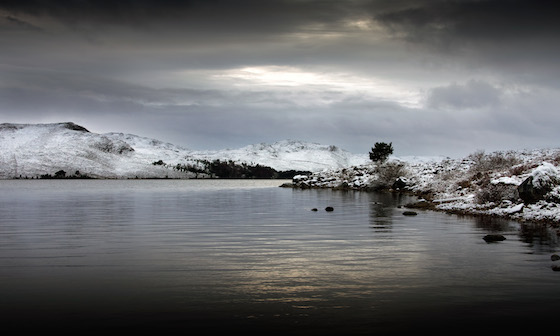
Loch Bruiach by Colin Campbell
We toiled around the shore, splashing in the water, or curving inland to sink knee-deep into snow-covered heather, drawing as close as we could to the island. So close and yet impossibly far: we had not carried a boat, and a swim on that frigid day would have been folly. I had come to the end of my road—as a hiker.
But as a writer, I had come to the beginning. For standing on that rocky beach, it was hard not to hear the howling of wolves—though they’ve been extinct in Scotland for centuries. I could see no trace of a building, but I knew that the surrounding slopes were dotted the ruins of Neolithic and Iron Age stone structures—the buildings of the pagan Celts whose beliefs survive in Scottish tales of magic and mystery. I knew, too, that much later, in the sixteenth century, on that island had stood a house grand enough for a great Scottish lady and her love: a woman said “to consort with witches” and a man whose enemies had ambushed him after he left this place, had cut off his head and brandished it on the end of a pike.
In an instant, I knew that I’d found the finale of my novel. I did not yet know exactly what would happen: but I knew that over on that island that I could not quite reach there would be blood and fire and a woman filled with fury, while the howling of wolves rose over the surrounding hills, and a great storm swirled out over the loch.
All this came from an accidental find that woke a hunch, doggedly followed. A footnote glimpsed in a little-read book, which led to even less-read tomes gathering dust in great libraries.
Which brings me to my favorite word. If “I don’t know” is my favorite phrase as a writer, my favorite single word is “serendipity.” Horace Walpole coined it in the eighteenth century, after the heroes of a fairy tale called The Three Princes of Serendip, who “were always making discoveries by accident and sagacity, of things which they were not in quest of.” Serendipity, says the Oxford English Dictionary, is “the faculty of making happy and unexpected discoveries by accident.”
Okay, so maybe I’m not finding things like my eerie Scottish loch entirely by accident. I was on a quest for something, after all, when I discovered the Scottish countess and her hideout. Just not that. I’ll settle for modified serendipity, but you get the point. In my writing life, serendipity is anything but accidental. It’s necessary.
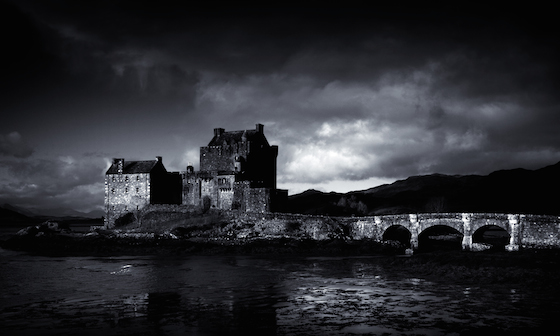
Eilean Donan by Colin Campbell
I don’t sit back and wait for wonderful places, intriguing characters, and marvelous ideas to just skitter across my desk. I work hard to put myself in the position to find them. As I trace my way back through thickets of footnotes and old books that gather history, gossip, and legend, I expect to bump up against a lot of dead ends, and I do, but I try to keep my storytelling antennae super-sensitive, so that I can recognize the promise of barely cracked doors and faint trails, and follow wherever they may lead. In my experience, it’s not what you expect to find that sparks a story into imaginative fire. What you expect—what you intend to write about—is merely the groundwork. It’s the unexpected, given rein, which makes a story burn with life.
One of my favorite bits of Shakespearean wisdom, which figures strongly in my first novel, comes from Julius Caesar: “There is a tide in the affairs of men, which, taken at the flood, leads on to fortune; omitted, all the voyage of their life is bound in shallows and in miseries.” It works for the craft of building stories, as well as for life — except that writers can’t sit on the shore and hope that the moon will pull the tides of story back and forth across their feet. We have to get down and dirty in the trenches, digging canals that will funnel the tides to us. Speaking for myself, I then have to summon the courage to let go of the story I thought I wanted to tell, and hoist sail in whatever direction the tide wishes to carry me.
In story, as in life, I believe in opportunity: in making it, and in taking it.
So here’s to not knowing all the answers. And to the adventures of serendipity.
All best,
Jennifer
————————————————————————————————————
This piece first appeared as a guest blog in Type M for Murder, August 15, 2010




